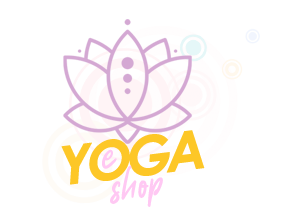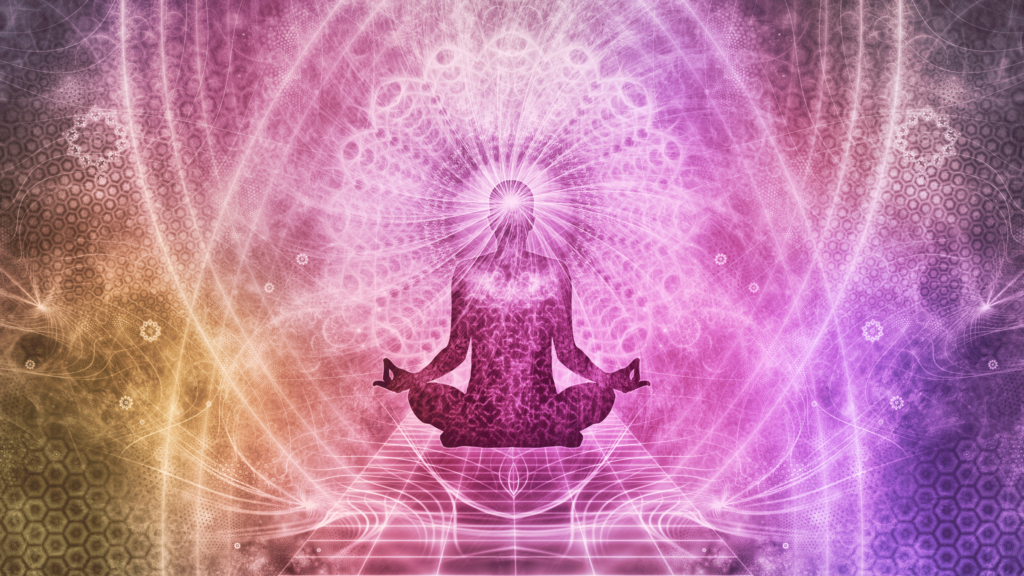
“], “filter”: { “nextExceptions”: “img, blockquote, div”, “nextContainsExceptions”: “img, blockquote, a.btn, a.o-button”} }”>
Heading out the door? Read this article on the new Outside+ app available now on iOS devices for members!
>”,”name”:”in-content-cta”,”type”:”link”}}”>Download the app.
This yin yoga practice and meditation is designed to help you explore and understand your subtle, or energetic, body. Practicing yoga for your chakras means being aware of the themes related to each chakra, or energy center, starting at the base of the spine and working your way upward through all seven chakras. It can help you understand what they represent for you and what it feels like when you’re experiencing either a lack or an excess around a particular area in life.
Becoming aware of your chakras can also prompt you to understand what you need in order to come back into balance. For some, that means needing to engage more with the theme of a certain chakra, while others may need to release excess attentiveness in a particular area. This awareness prompts you to ask, what would the highest activation of each chakra look like for you?
Even if you’re not certain what the chakras are or you’re not certain what you think about these concepts, you can still use the practice to connect with general themes in life. The practice is simply an opportunity to learn about yourself and to ask yourself questions related to essential life themes. How can you relate, for example, to the feeling of security and groundedness associated with the root chakra?
For each pose, I’ve included a statement that you can quietly repeat to yourself. Notice what it brings up for you and how it makes you feel. You’re not trying to convince yourself that each statement is necessarily true. Instead, use it as a point of inquiry. Ask yourself, is this true for me? Why or why not? What would change in my life if I believed it?
A Yin Yoga for Chakras Practice and Meditation
You’ll spend about three minutes in each pose. Some of the poses call for a block although you can substitute a pillow, some cushions, or thick folded blankets or simply do the pose without it.
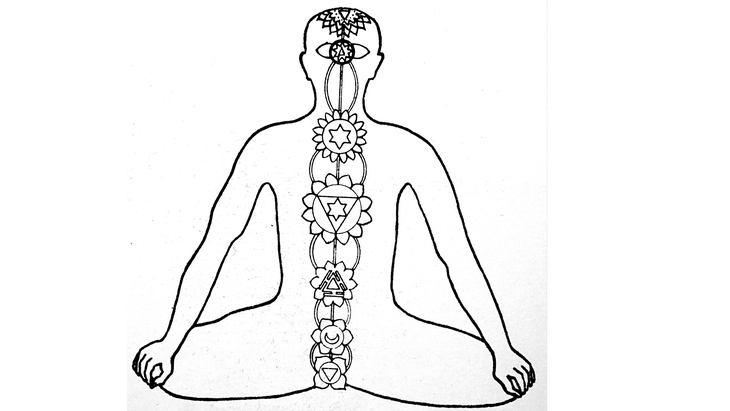
Seated Meditation
Begin your yin yoga for chakras practice sitting in any way that supports your hips and your lower back. Close your eyes and focus on the rhythm of your breath.
Slowly breathe in and out through your nose as you bring your awareness to the base of your spine and the root chakra (muladhara), which relates to safety, security, and belonging. Even though you might not be able to feel this energetic center, you can still visualize it and go through the process of contemplating your relationship with grounding, safety, stability, and belonging.
When you’re ready, move your awareness upward to your hips and pelvis. The sacral chakra (svadisthana), which relates to sensuality and creativity, resides here. Let your awareness linger on these concepts.
Continue to bring your attention upward to the center of your abdomen and your solar plexus chakra (manipura). This is your source of self-esteem, determination, and follow-through. Breathe here.
As you move upward, rest your awareness on the heart chakra (anahata), which relates to love, compassion, and empathy for all beings, including yourself.
When you’re ready, focus on your throat chakra (vishuddha), which is connected to clear communication, speaking up, listening, and expressing yourself authentically.
Continue toward the third eye chakra (ajna) above your brow. This is the seat of your intuition and insight as well as your imagination.
Finally, rest your awareness on the top of your head, also known as the crown chakra (sahasrara). This is your connection to all living beings, your connection to trust, and your connection to something greater.
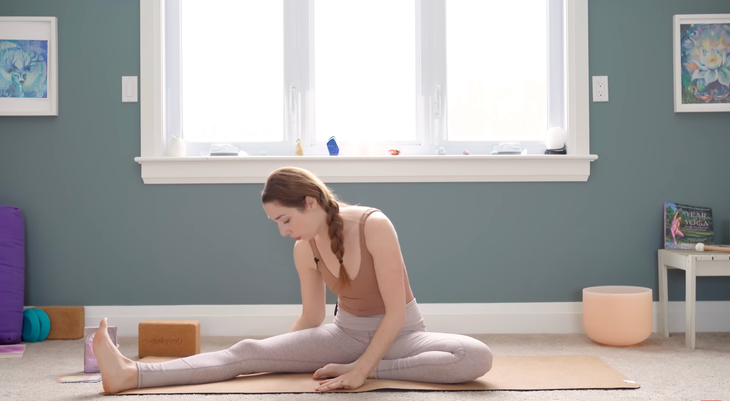
Root Chakra | Half Butterfly
This yin yoga variation of half butterfly relates to the root chakra, which relates to your foundation. It’s about feeling safe and secure, grounded and anchored. This means trusting that all is well and you are safe. It also means knowing that you have a place where you belong, that you are worthy of belonging, and that your needs are met. This relates to your physical body as well as your finances.
How to: From your seated position, straighten your right leg slightly out to the side. Bend your left knee and either bring your left foot against your inner right thigh in Half Butterfly, which is similar to Janu Sirsasana.
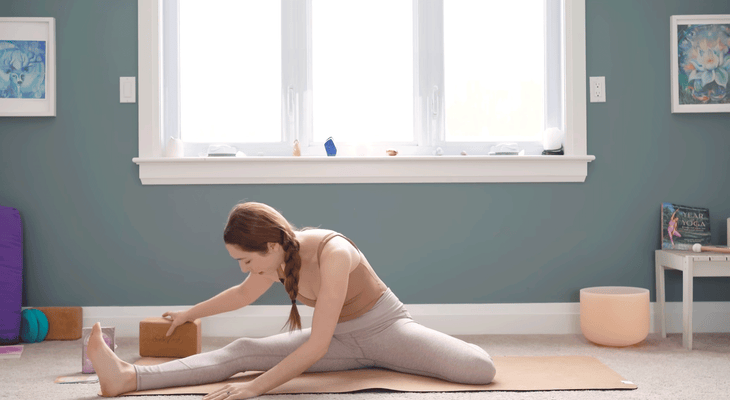
Alternately, you can keep your left knee bent out to the side and bring your left shin and foot behind you in a variation of Deer Pose for a more intense stretch along your inner left thigh.
Whichever position you choose, sit tall and then fold forward from your hips in the direction of your right knee. You can do this pose with or without your blocks as support for your head or forearms. Let yourself experience some release of tension here. Try to relax your upper body and let yourself feel heavier and heavier with every exhalation as you settle into a feeling of grounding. Stay here for at least a couple minutes.
Ease out of the pose primarily through your arm strength as you slowly walk your hands in and lift yourself nice and slow. Move in whatever way feels good to you here, maybe straightening your legs in front of you or taking a windshield-wiper motion with your knees before repeating the pose on the other side.
Affirmation: I am grounded in the present moment.
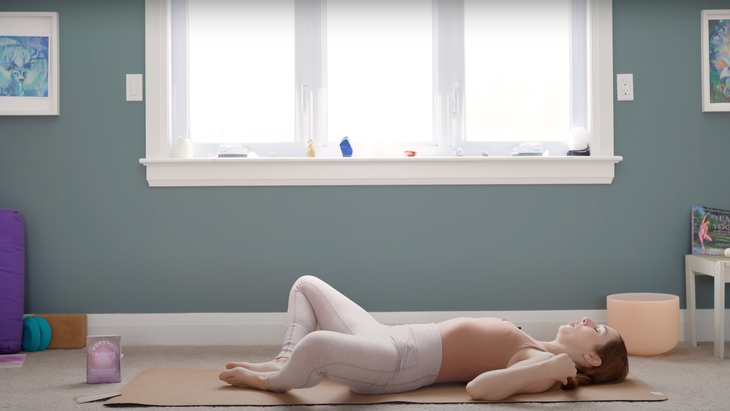
Sacral Chakra | Reclined Butterfly
The sacral chakra relates to sensuality and sexuality and creative power. It also relates to the water element and helps you be attuned with your emotions and flow with them.
How to: Lower yourself onto your back. Take a moment here to feel the effects of those poses. Bring the soles of your feet together and let your knees fall apart in this longer-held version of Reclined Bound Angle. If you have a block or some kind of prop, you can place it underneath your sacrum to elevate the hips to create a slight inversion and activate the stretch. If that feels uncomfortable or you don’t have a block at home, skip it.
You can leave your arms by your sides, relax your arms alongside your ears, place your hands on the area of your sacral chakra, or find whatever position is most comfortable for you. Stay here for at least a couple of minutes.
Come out of the pose by bringing your knees together and your feet flat on the mat or draw your knees toward your chest. Lift your hips and shift the block to the side. Take whatever movement you’d like.
Affirmation: My power lies in my sensitivity.
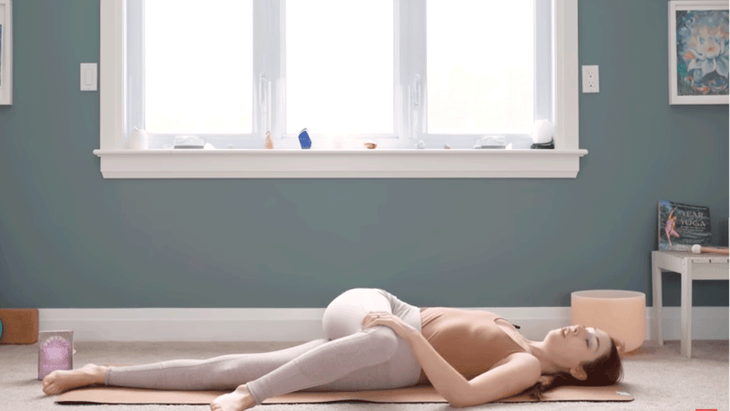
Solar Plexus | Reclined Twist or Cat Pulling Its Tail
From here, shift your awareness upward toward the solar plexus chakra, which relates to your will power, self-esteem, discipline, and determination.
How to: Start on your back with your legs straight. Shift your hips slightly to the right, bend your right knee, and bring it toward your belly. Cross your right thigh across your body and come into a reclined twist. You can extend your right arm straight out to the side. This may be where you’ll want to stay.
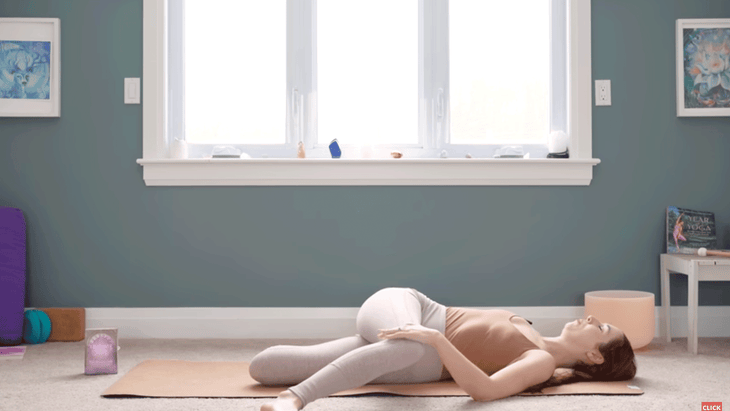
If you’d like to come into the yin yoga pose known as Cat Pulling Its Tail, bend your left knee to bring your left heel toward your glutes. Reach for your left foot with your right hand. If you’re able to grasp your foot, push it away from you as if you’re moving your knees in opposite directions. Try to release your right shoulder so it rests on the mat. Your chest will face the ceiling and it will feel as if you’re trying to stack your right hip on top of your left. You can keep your right leg bent or straighten it.
Linger in whatever variation of the pose feels best for you. You’re simply hanging out in this reclined twist. Stay here for at least a couple of minutes.
Release your foot and slowly come out of the twist and back to center. Give yourself a breath or two here to decompress and to feel the effects of the pose. Take any transitional movements that feel good, such as stretching your legs and arms, before making your way into the pose on the other side.
Affirmation: I release all fears of not being good enough.
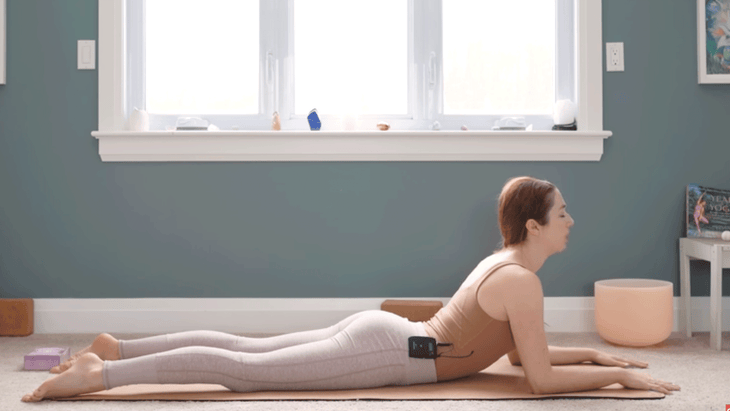
Heart Chakra | Sphinx Pose
The heart chakra relates to your ability to give and receive love as well as feel empathy and compassion for ourselves and others.
How to: From lying on your back, slowly roll onto your belly, bring your legs at least hip-distance apart, and prop yourself on your forearms in Sphinx Pose. You control how deep you go in this backbend. You can make it less intense by walking your hands farther out in front of you.
The objective of this yin yoga pose isn’t about how high you can lift yourself. It’s more about creating expansion across your chest. To help with this, push the tops of your feet into the mat, press your pubic bone against the floor, and roll your shoulders down and away from your ears as you pull your heart forward. Focus on your heart space.
Affirmation: I am worthy of love and acceptance.

Throat Chakra | Neck Release
The throat chakra is for communication—your ability to speak and listen. Allow yourself to simply be with that concept here.
How to: From Sphinx Pose, slowly press yourself back up and come into a seated position, whether cross-legged or kneeling or anything that feels comfortable. Make sure you can lengthen and lift out of your lower back as you sit tall. You’re going to take your right ear toward your right shoulder. You can also crawl your left fingertips farther out to the left side for a more intense stretch along the left side of your neck as well as your shoulder. Breathe here.
Slowly lift all the way back up through center. Shrug your shoulders and maybe switch the crossing of your legs before you switch sides and lower your left ear toward your left shoulder, keeping your chin slightly lifted. Linger here.
Affirmation: I allow all parts of myself to be expressed.
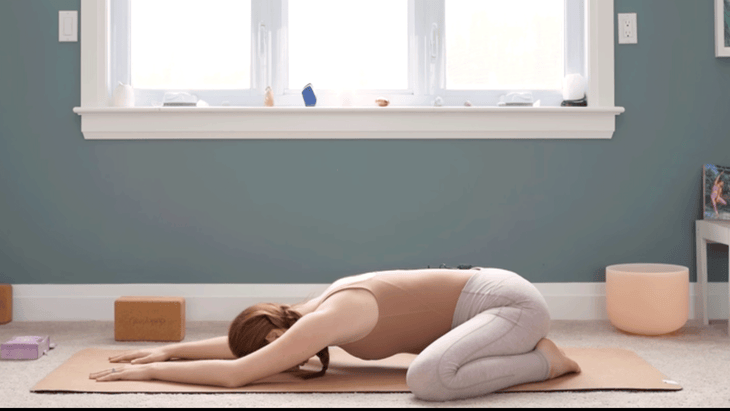
Third Eye Chakra | Child’s Pose
As you move into Child’s Pose, focus on the third eye chakra, which is the center of insight and intuition
How to: From kneeling, bring your big toes together to touch, widen your knees as much as you would like, and sink your hips toward your heels as you walk your hands forward and fold your chest all the way down. Try to let your forehead come in contact directly with the mat, a block, or whatever prop you’re using at home. Stay here for about 3 minutes.
Affirmation: My intuition is always guiding me.

Crown Chakra | Savasana
This last pose for your crown chakra is about connection to something greater. This is your connection to all other beings and your sense of faith and trust.
How to: Slowly make your way to lying down on your mat in a comfortable position, however you’d like to get there. Stay in Savasana as as long as you can.
Affirmation: I am always protected and divinely guided.
When you’re ready to come out of Savasana, begin to deepen your breath and reactivate your mind. Bring some movement back into your body. Maybe stretch your arms overhead and pull your knees toward your belly if that feels good. You can rock a little, side to side, massaging your lower back. Then roll to one side and slowly come up to take a seat. Bring your hands together in anjali mudra, or prayer position at the heart, and reconnect to those seven energetic centers. Before you close your yin yoga for chakras practice, bring your awareness to the base of the spine, the root chakra. Continue upward through each chakra, one at a time, lingering and allowing yourself to feel perfectly at ease.
About Our Contributor
Kassandra Reinhardt is an Ottawa-based Yin Yoga and vinyasa yoga instructor whose YouTube channel, Yoga With Kassandra, has grown to 2.2 million subscribers and has more than 230 million views. Kassandra recently released her guided yoga journal, My Yoga Journey: A Guided Journal, her daily affirmation card deck, I Radiate Joy,and her book, Year of Yoga.
